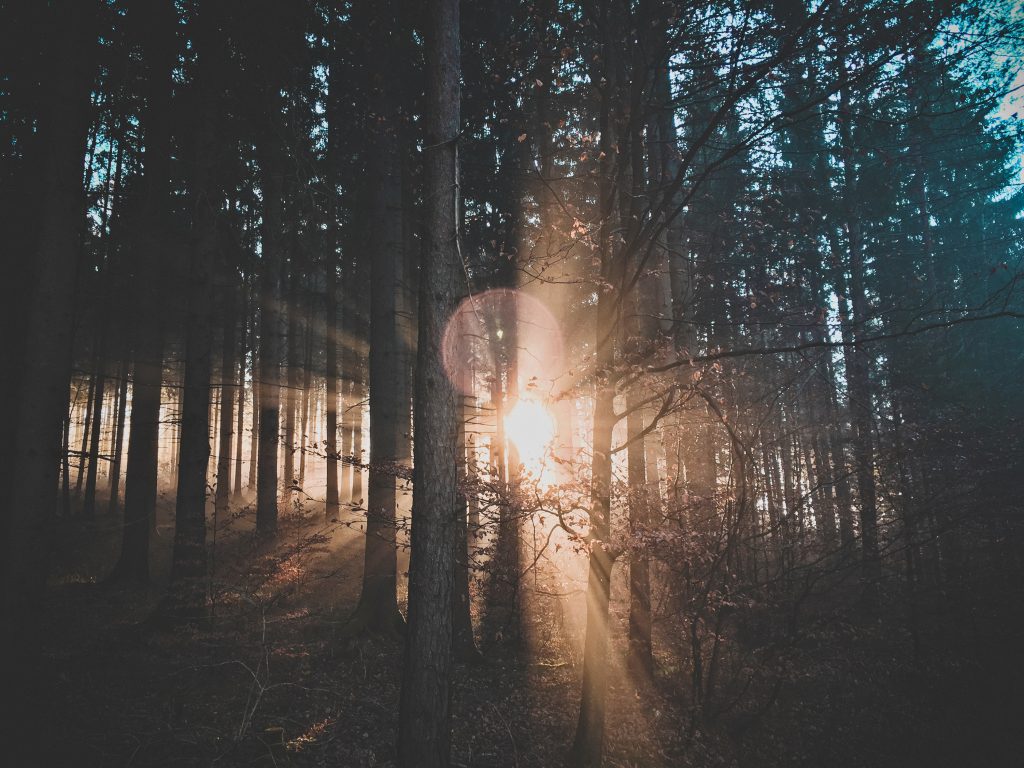
There’s no shortage of discussions about making resolutions and setting goals come January, but each new year also offers the chance to dream up fresh ideas – and an opportunity to work toward bringing them to life. Here are our tips for channeling your creativity to generate an explosion of ideas that might just lead to your next project.
SETTING INTENTIONS
The first step in firing up your personal idea factory is to think about what you want to accomplish. Are you looking for story ideas for your next short film? Are you hoping to drum up some themes or topics you’d like to photograph in the coming year? Write down your aspirations as a way of nudging your brain into gear.
While you’re doing this, also take time to consider strategies that have worked for you in the past. Think about this as making space in three different ways:
- Mental Space: What blocks your creativity? What enhances it? It’s important to figure out what allows you to slip into what we call a “no-judgment zone,” that place where you shed any inhibitions or mental barriers and just let your mind run wild. It’s also important to consider what distracts you and adjust accordingly; some people find it’s best to begin the idea-generating process solo and only bring in a trusted creative partner once this initial phase is complete.
- Physical Space: Do you generate the best ideas after spending time outside, or do you prefer being indoors? Is there a particular spot in your home where you feel most energized, or do you like the buzz of a café or other public setting? Also consider noise levels, furniture, and physical comfort in the equation.
- Temporal Space: When are your synapses firing off – do you love early morning sessions, or are you a night owl? For some folks, it’s best to figure out a daily routine that allows for time to generate ideas, or set a formal schedule (i.e. you spend the first half-hour of every day on brainstorming activities related to existing or upcoming projects).

DEVELOPING STORY IDEAS
Now that you have an idea of what you’re hoping to accomplish and what will help you arrive at that goal, it’s time to explore the wonderful world of brainstorming, which is basically just a suite of techniques that will help generate ideas. For any of the suggestions listed here, it’s important to remember that the best ideas flow when we don’t place boundaries or judgments on ourselves – it’s all about coming up with a stack of ideas now that you can critique, massage, winnow down, and share with others later down the line.
- Word Cloud: This is probably what most people think of when they hear the term “brainstorming.” This technique involves simply writing down a “root word” and then jotting down other words – or drawing images – that come to mind.
- Mind Mapping: This is similar to the word cloud method, but with a bit more structure. This involves using a hub and spoke system, where you circle a word or phrase that comprises a central idea and draw lines that radiate from it to more words. You then drill down further into each of those words, which end up becoming subcategories, looking almost like a competition bracket at the end.
- Freewriting: Just as it sounds, you simply choose a topic and begin writing “stream of consciousness”-style. It’s especially important to remain in the moment and resist the temptation to begin critiquing yourself as you write. After you finish, go through and highlight anything that stands out.
- List Making: Come up with a topic and begin writing words, ideas, and thoughts without judgment until you can’t think of anything else to write. Afterwards, go through and “refine” the list by once again highlighting anything that catches your eye; you might even use one of the other brainstorming methods to further elaborate on these.
- Use Your Circumstances: Sometimes you can generate ideas by flipping through your calendar and considering what you have going on in life. What events do you have planned? What people might you meet or what places might you visit? What could possibly happen during these experiences, what challenges and rewards might exist, what strikes you as interesting – or what do you think an audience would find interesting?
- Create Constraints: This method forces you down the creative path to help you both generate ideas and cull from the ones you’ve already drummed up. A lot of different things can serve as “constraints”: you can focus on using a specific type of storytelling or filmmaking technique (“I want to shoot in black-and-white”), you can create unique parameters (you’re working at your kitchen table and decide that you must come up with an idea that involves food), or you can even set an arbitrary deadline to create pressure (“I have ten minutes to describe a character I’d like to film.”).
- Use Your Knowledge of Story: You can use the components of story structure (i.e. specific character bios, a specific location setting) to kickstart the creative process before you even look at the big picture story.
- Start With Yourself: One of the most repeated maxims in writing is to “Start with what you know,” and that advice works across the creative disciplines. Think about your own experiences in life to come up with ideas that can create storytelling opportunities: What obstacles have you overcome? What lessons have you learned? What has inspired you or caused you to question your beliefs? We all have plenty of depth to our personal story and that can be a great jumping-off point to finding other stories.

OTHER TIPS AND TRICKS
- If you find that you’re “stuck” or in a creative rut, give yourself a time limit or move on to something else; you can always return to the brainstorming session with a fresh mind.
- Trust your gut! If you’re feeling hesitation with an idea, maybe it’s a time to revisit some of the other concepts you brainstormed. However, if you find yourself feeling the spark of excitement, run with it!
- Even if you pass on ideas the first time around, keep them on a running list for the future; you never know when genius might strike, and it can offer a jumping off point down the road when the proverbial well is dry.
ORGANIZING YOUR IDEAS
Once you’ve generated ideas, it’s crucial to figure out a system to track and organize them, so you can continue to build off of them. While you can definitely just grab a piece of paper and a pen or a journal and get to work, there are a variety of more formal tools you can use to capture and track the entire process, from idea generation to end result. A basic software suite like Microsoft Office offers various options for laying out your thoughts, while Google Docs takes it a step further by allowing others to share, offer comments, and edit your work for a collaborative experience. Other great tools include Trello, Asana, and Evernote, all of which offer ways to gather your thoughts, then organize, expand, and share them in a casual or project management format. Speaking of sharing your ideas – it’s never a bad idea to find an accountability buddy or a formal creative partner to not only bounce ideas off of, but to help you stay focused and do your best work throughout the creative process.
Now: Go brainstorm!!
top photo by Arto Marttinen
